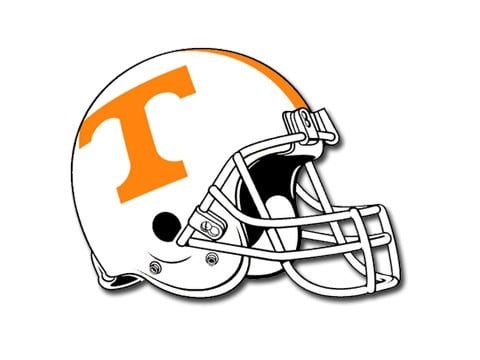Four major changes the next Big Ten commissioner should make to improve the conference
The Big Ten needs a new commissioner. Current conference commissioner Jim Delany, who first stepped into the role in 1989, announced this week that he’d be retiring in June 2020. Since the announcement was made, there’s been speculation about who will replace Delany, but there’s been one name missing from all of these lists.
Mine.
I am here today to officially announce my candidacy to become the new commissioner of the conference. Stop paying that search firm, Big Ten, I’m right here. You found me. Now, as somebody who has no administrative experience, I don’t have much of a resume to share. What I have instead are ideas. Ideas that will take the improvements Delany made to the conference during his 30 years and make the Big Ten even better.
Here is my four-point plan to making the Big Ten the greatest conference in the history of college athletics.
1. I’m kicking Rutgers and Maryland out: Delany did a lot of wonderful things for the Big Ten, but he also made some mistakes. So with my first move, I will correct one of the biggest. Rutgers and Maryland were a money grab. They were brought in to help expand the Big Ten Network’s footprint and increase revenue generated by the cable network. Their markets and the fact they were willing to make the move were the primary factors in bringing them into the Big Ten.
Well, I don’t want them. I have nothing against either institution, but neither is a Big Ten school nor will they ever feel like one. Penn State has been a member of the Big Ten since 1990 (1993 for football) and is a Big Ten school now, even if it didn’t totally feel like one at first. Nebraska joined the Big Ten in 2011, and it’s felt like a Big Ten school since the moment it arrived. It just fits. Maryland and Rutgers do not and will not. Maryland is an ACC school, and it should be an ACC school. Rutgers has been a bit of a vagabond during its life, but while it’s hard to say something is an AAC school considering the short history of the conference, Rutgers is an AAC school.
As for the impact this will have on the Big Ten Network, it’s only a matter of time before the network is subscription-based just like Netflix, Hulu and Amazon Prime. The way we consume television has changed so much in the last five to ten years, and it will continue to evolve into the next decade. The number of people in your metro area won’t matter nearly as much as your ability to reach your fanbase and convince them to fork over $9.99 a month or whatever for your product. Big Ten games between Rutgers and Minnesota and Maryland and Purdue won’t be much of a sell.
Also, while I will not rule out expanding back to 14, or even 16 schools, any future expansion will be based on fit within the conference both from a geographical and cultural footprint.
2. I’m ditching football divisions, too: I’ve come around on this idea over the last couple of years. I used to be in favor of divisions, but my stance has evolved on this. Divisions might have been a better idea during the BCS era, but they present possible problems during the College Football Playoff Era. Just this past season, Ohio State played Northwestern in the Big Ten Championship. The 45-24 win over an 8-4 Northwestern team that was ranked No. 21 by the selection committee at the time didn’t do much to boost Ohio State’s playoff resume. Had the Buckeyes played a second game against Michigan, which was 10-2 and ranked No. 7, it might have helped put the Buckeyes ahead of both Georgia and Oklahoma in the final rankings.
So I would suggest using the model first proposed by SB Nation, but would be open to other proposals as well, as a true leader such as myself is always open to listening to new ideas. SB Nation’s proposal suggests we ditch the divisions, give each of our 12 institutions three annual rivalry games, and rotate the other conference games among the rest of our institutions.
Speaking of those other conference games …
3. We’re going back to an eight-game conference schedule: As a fan, I prefer more conference games than less. It’s also better for our network as far as inventory is concerned. But more conference games is a problem for our conference’s ability to win a national title. Three Power Five conferences play a nine-game conference schedule. Us, the Big 12 and the Pac-12. Those three conferences also happen to be the only Power Five conferences to miss out on a College Football Playoff berth. The ACC and SEC play eight-game conference schedules and have had a team in the playoff every season. Now, there are other factors involved here, but I don’t believe this is entirely coincidental.
It is incredibly difficult for any team to go 8-0 in a conference schedule, no matter how good things are. Even if our best team was expected to win each conference game 80 percent of the time, it would only go 8-0 in conference play 16.8 percent of the time. Ask to play a ninth game, and it drops to 13.4 percent of the time. We should be trying to maximize our opportunities to allow our best and brightest to succeed, not throwing more obstacles in their way to increase their chances of failure.
4. No more Big Ten Tournaments in New York: This is basketball related, but without Rutgers in the conference anymore, there’s no longer an excuse for this charade. New York is a fine city. A wonderful city. One of the greatest accomplishments of our country. It is a city filled with Big Ten alumni. But it is not a Big Ten city, nor does it value us as much as it does other conferences like the Big East. If New York would rather have the Big East than us, then New York can’t have us. Our conference tournament will be played in Big Ten cities. Chicago and Indianapolis will remain as part of the rotation, and I will add Minneapolis, Detroit and Cleveland as well should those cities be interested.
Finally, while this isn’t a part of my plan to improve the Big Ten, there is another reason why I should receive consideration for this job: I have a home in the area. This is a huge selling point, in my opinion. If I am chosen to run the Big Ten, the conference will save money on any possible relocation fees. I’m a 35-minute drive away from the conference’s office without traffic, and I’ll never be coming into the office before 11 a.m. anyway, so I won’t have to deal with traffic.
You’d be stupid not to hire me, Big Ten. Let’s make it happen. #Fornelli2020
Submit your questions to be answered in this space on Twitter (@TomFornelli) or via email (tom.fornelli@cbsinteractive.com)
I wanted to see your thoughts on whether Jim Harbaugh finally relinquishing the offense to a young and up and comer will be enough to get Michigan over the 10-win hump. Especially given that the defense will likely take a step down, will a more innovative and modern offensive playbook be enough to mask the defensive efficiencies and finally have Michigan in Indy with a chance for the playoff? – Roberto Icaza
Well, I certainly don’t think it will hurt. While I don’t believe Michigan’s offensive philosophy has been the only thing holding it back during the Harbaugh era — the talent level has improved, but Michigan hasn’t had the depth of talent it needs to this point — I do believe that it’s held the program back a bit. I mean, let’s look at what happened with Alabama. Nick Saban won three national titles, but that didn’t stop him from making changes. Based on what he saw with his team struggling to stop more modern offenses, Saban realized he needed to modernize his offense a bit as well. When it comes to playing teams you’re a lot more talented than, you can win with a predictable, vanilla offense and good defense. But when you run into teams that are on your level talent-wise, or superior, you need to open things up a bit on offense. That’s just the way the sport is going.
Now, as for whether or not simply making this change will be enough to take Michigan back to the level of Big Ten champion and national title contender, I don’t know. But it’s a step in the right direction.
How long away do you anticipate conference realignment will occur? What schools do you think have a high probability of being moved around? – @georgetxam
George, I gave my thoughts on what the future of realignment will look like here. As for your question of when it’s likely to occur, television has been the greatest driving force behind realignment in the past, so we should look there for our answers about the future. The current television deal for the College Football Playoff runs through 2026, so I would anticipate things picking up steam in the years just ahead of that.
I’m a Wisconsin fan, does Hornibrook transferring solidify the Badgers going with Mertz as QB? Wisconsin is conservative usually when it comes to things like this, curious your thoughts? – Andy Carrigan
I would imagine there will be a QB competition, like you always see, between incoming four-star freshman Graham Mertz, Jack Coan and anybody else on the roster. The fact there will be a competition is likely one of the main factors in Alex Hornibrook’s decision to leave Wisconsin.
As for Wisconsin being more conservative with its QBs, we’ve seen freshman quarterbacks playing more than ever before in recent years, and they’ve had tremendous impacts. Given Wisconsin’s run-first approach on offense, one could argue it’s less risky for the Badgers to use a freshman than other programs that put more of the onus on their QB. Plus, you know, Wisconsin went 8-5 last season and 5-4 in the Big Ten. Seasons like those make you more open to the idea of trying new things.
How far into the future will we be before Alabama misses the playoff? – @NickParadies
It’s going to happen at some point, but I believe it’ll be at least two or three years. Not because of anything particularly wrong with Alabama or its prospects, but because the SEC is very good, and the Tide will suffer an important loss at some point.
Why don’t you have Hakeem Butler in your latest mock draft? – Andrew Morris
The simple answer is that I just don’t think he’ll be drafted in the first round! Listen, there’s a lot to like about Butler. He’s huge and he’s fast. He had a great performance at the combine. But there are flaws, as well. While Butler uses his body to make some spectacular catches in traffic, he’s also inconsistent. Plus, he’s not the most polished route runner out there; he needs work. Not the kind of work that will keep somebody from drafting him, but with the incredible amount of depth of defenders in this draft, I don’t see a lot of room for Butler in the first round.
My biggest knock on him, really, is his hands. According to Sports Info Solutions, 57 FBS receivers had at least 100 targets last season. Butler had 111. He had 12 drops, and his drop rate of 15.2 percent ranked 57th of those 57 receivers. His on-target catch rate of 74.7 percent ranked 50th. Now, that’s not to say he doesn’t have his good qualities. His first-down rate of 74.6 percent ranked third, as did his yards per target of 11.84. But the hands are a concern, especially since Butler will now be competing against NFL defensive backs instead of college defensive backs. He’ll be drafted, and he has a chance to be quite good, but I don’t believe he’s a first-round pick.






Leave a Reply